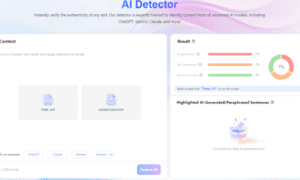Expert reveals the secrets of Identity and Access Management professional world
Due to the increasing need for secure and efficient identity management solutions driven by the rapid shift to digital services and heightened cybersecurity threats fueled by the consumer Identity and Access Management market is projected to more than double by 2028, fueled by rising demand for secure identity management solutions. As digital transformation accelerates, strong IAM systems become essential for protecting data and simplifying access. This growth underscores the need for skilled professionals to develop and manage these systems, enhancing cybersecurity and user experiences globally. Sandeep Singh, a Senior Engineer in Information Security, with over 20 years of experience in a career in the IAM domain, who was awarded several performance awards, including the Star Performance Award and the Mentor Award, will offer insights on how to become a professional in Identity and Access Management (IAM).
Sandeep, we appreciate you for being with us. With extensive IAM experience, you’ve played critical roles at prominent companies like HCL Technology, and Wal-Mart Inc. as Cybersecurity Specialist where you crafted solutions for unique challenges and offered hands-on support to ensure IAM success. Could you share the key milestones that defined your IAM journey and vital aspects for aspiring professionals?
Absolutely. My journey started in 2004 when I earned my master’s degree in computer applications. This educational background proved to be essential as it gave me the technical skills necessary for the industry. I kicked off my career as a lead developer on a J2EE (Java 2 Enterprise Edition)-based project, where I was involved in building an ‘Employee & Contractor Management’ application — my initial foray into identity management. This project was significant since it laid the groundwork for my entry into the IAM field in 2005. I then worked extensively with IAM products from Sun Microsystems, such as Sun Identity Manager and Access Manager, which greatly enhanced my understanding of IAM frameworks. After Oracle acquired Sun Microsystems, I made the shift to Oracle Identity Management, where I grew to become a Subject Matter Expert. Throughout my career, continuous learning has been crucial. It’s important to stay updated on IAM technologies. I always encourage others to study hard and embrace lifelong learning to succeed in any profession, particularly in fast-changing fields like IAM.
At Wal-Mart, your work on IdentityIQ Identity Management was crucial, boosting the security framework. It led to an 80% increase in system uptime, over 70% performance improvement, and a significant reduction in costs. How did you achieve these results, and what’s the secret to your success in this area at Wal-Mart and globally?
At Wal-Mart, I’ve made significant progress as a Senior System and Infrastructure Engineer in Information Security. I’ve handled user identities from start to finish, ensuring everything stays secure and compliant with SOX. Automating tasks has made onboarding a breeze, cutting down manual work and reducing risks. Regular access reviews keep us in line with regulations, and I’ve tailored IdentityIQ to meet our needs. Sharing my insights with the team has really boosted our overall skills.
Globally, I’ve tackled major projects, like shifting a city council’s system in Australia from Novell to Oracle IDAM, and dealing with tricky issues like fixing identity group deletions in Active Directory. In the U.S., I spearheaded a telecom client’s switch from Oracle IDAM to IdentityIQ, redesigning their architecture for improved Role-Based Access Control.
My advice? Jump into various projects, even the challenging ones. Working across different industries with various IAM products hones your problem-solving skills and broadens your understanding. These experiences gear you up for complex challenges like system migrations. Embracing diverse opportunities helps you build a strong, adaptable IAM skill set. This hands-on experience is priceless and makes you a more versatile IAM pro.
One of the projects you worked on as a IAM Lead at TechDemoCracy LLC was the Healthcare IAM project, where you had to implement provisioning for multiple roles and application accounts. As we know, approximately 80,000 users needed access to this role. Specifically, what were the key challenges you faced in customizing the workflow to meet the client’s unique requirements?
In the Healthcare IAM project, we faced the challenge of providing access for various roles and application accounts, as the client’s requirements were very specific. To address this challenge, we customized the workflow to handle the complex requirements of multiple roles and application account provisioning. The standard out-of-the-box functionality was not sufficient to meet the client’s specific needs, so we developed a custom workflow solution. This customization allowed for more granular control over role assignments and application account provisioning, ensuring that users received the correct access to the appropriate resources based on their roles. I took the lead in creating a custom workflow to address these complex needs since standard solutions weren’t adequate. This strategy enabled us to have detailed control over role assignments, ensuring that users had the right level of access, which in turn enhanced both security and efficiency. Our customized solution effectively addressed the client’s unique requirements and improved the management of roles and access.
To achieve success in similar projects, it’s crucial to remain adaptable and attentive to the needs of the client. When standard solutions are insufficient, creating custom workflows that cater to specific requirements becomes essential. This approach allows for accurate control over roles, upholding both security and efficiency while meeting customer expectations.
You’ve received awards like the Star Performance and Mentor Awards for your IAM expertise. Mentoring is especially impactful. How do you share your methods and knowledge with others in the field?
As I’ve mentioned before, I believe that continuous learning is essential, and I actively engage in this process. In my organization, I participate in training sessions designed to enhance the IAM skills of team members, aiming to boost their expertise in IAM solutions. Additionally, I contribute to the larger knowledge community by sharing insights through various media, forums, and IAM groups. By regularly reviewing our IAM designs and conducting code reviews, I ensure that we adhere to best practices while maintaining high standards of security and efficiency.
These initiatives have a significant impact on our organization. Training new employees improves their IAM capabilities, which is crucial for the successful execution of projects. This strategy not only builds our team’s skills but also aligns with our organizational goals. By cultivating a knowledgeable workforce, I help the organization effectively address IAM challenges, contributing to its overall success. Sharing knowledge empowers individuals and strengthens the organization, enabling us to adapt and thrive in a rapidly changing technological landscape.































